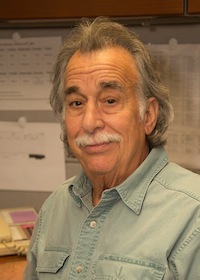Joel Levine

Professor Emeritus
John S. Toll Professor
PhD, Washington University
Member, Stony Brook Glial Network
Life Sciences Building
Office: Room 514
Lab: Room 521
Phone: (631) 632-8642
Fax: (631) 632-6661
DR. LEVINE'S LAB IS NO LONGER ACCEPTING STUDENTS. THANK YOU FOR YOUR INTEREST.
Training
Joel Levine attended the University of Pennsylvania and received a B.A. degree in
English in 1966. He attended Washington University and received a Ph.D. in Neural
Sciences in 1980. He was a Postdoctoral Fellow at The Salk Institute from 1980 to
1983 and a Research Associate in the Molecular Neurobiology Laboratory at the Salk
Institute from 1983 to 1984. He joined the Department of Neurobiology and Behavior
at Stony Brook in 1984 as Assistant Professor. He was promoted to the rank of Associate
Professor with tenure in 1990 and to Full Professor in 1998. From 2001 to 2007 he
served as Associate Editor for the Journal of Neuroscience. He has been a member of
the Society for Neuroscience since 1984.
Research Interests/Expertise
Glial cells are the most numerous and most poorly understood component of the central
nervous system. Traditionally, they have been thought of as a "glue-like" substance
providing nutritive and metabolic support to neurons. We know now that glia are a
highly diverse and dynamic population of cells actively involved in all aspects of
neuronal function ranging from guiding axons to their targets during development to
regulating synaptic development, transmission and plasticity in the adult. Glia also
play important roles in many diseases. Our research pioneered studies of oligodendrocyte
precursor cells (also known as NG2 cells) in developing and adult animals. Recent
studies have been aimed at understanding 1) the functions of oligodendrocvte precursor
cells in spinal cord injury and repair, 2) how molecules secreted by NG2 cells act
to inhibit or prevent axon growth, 3) mechanisms that regulate the differentiation
of NG2 cells into myelin-forming cells in animal models of multiple sclerosis, and
4) the epigenetic regulation of cell fate and plasticity in developing and adult oligodendrocytes.
